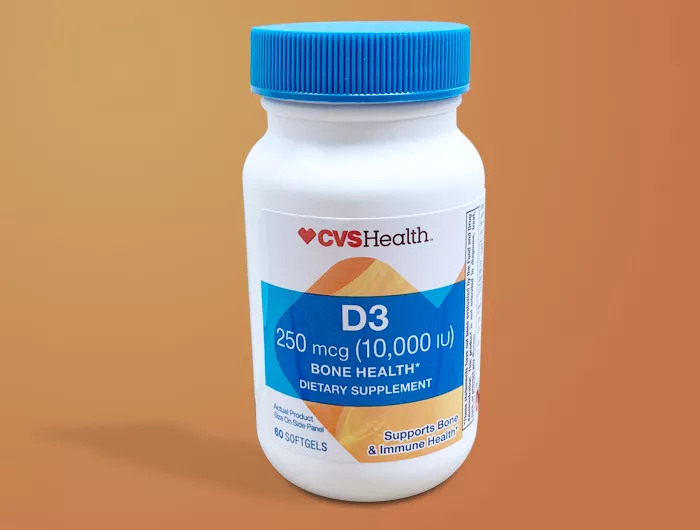More vitamin D isn't necessarily better

Lindsay Moyer/CSPI.
“Bone health,” says CVS brand vitamin D, which comes in five doses—400 IU, 1,000 IU, 2,000 IU, 5,000 IU, and 10,000 IU.
Whoa. The Recommended Dietary Allowance is only 600 IU a day up to age 70 and 800 IU over 70.
Do your bones need doses in the thousands of IUs?
The VITAL trial randomly assigned 25,871 people to take 2,000 IU of vitamin D or a placebo every day for five years. Roughly 770 of the participants had their bone mineral density tested when they entered the study and again after two years.
“Overall, taking vitamin D did not improve bone mineral density,” says JoAnn Manson, chief of preventive medicine at Brigham and Women’s Hospital in Boston, who led the main trial.
Vitamin D is essential for protecting bones, she adds. “It’s important not to be low, but more is not necessarily better.”
What’s the bottom line?
“We’re not recommending that everyone start taking high doses of vitamin D,” says Manson. “If you start out at what’s already being recommended, you’re not likely to derive benefits for bone health by taking more.”
Megadoses of vitamin D may even weaken bones
In 2019, Canadian researchers reported that among 303 middle-aged and older adults (none were deficient in vitamin D), those who were randomly assigned to get 4,000 IU a day for three years lost more bone in their arms than those who got 400 IU a day. And those who got 10,000 IU a day lost more bone in their arms and shins than those who got 400 IU a day.
Tell that to CVS.
What to do
Aim for recommended intakes of vitamin D (600 IU a day up to age 70 and 800 IU a day over 70), and no more.
Fortified foods typically have only 40 to 100 IU per serving, so most people need a daily multivitamin or vitamin D supplement to reach 600 or 800 IU.




